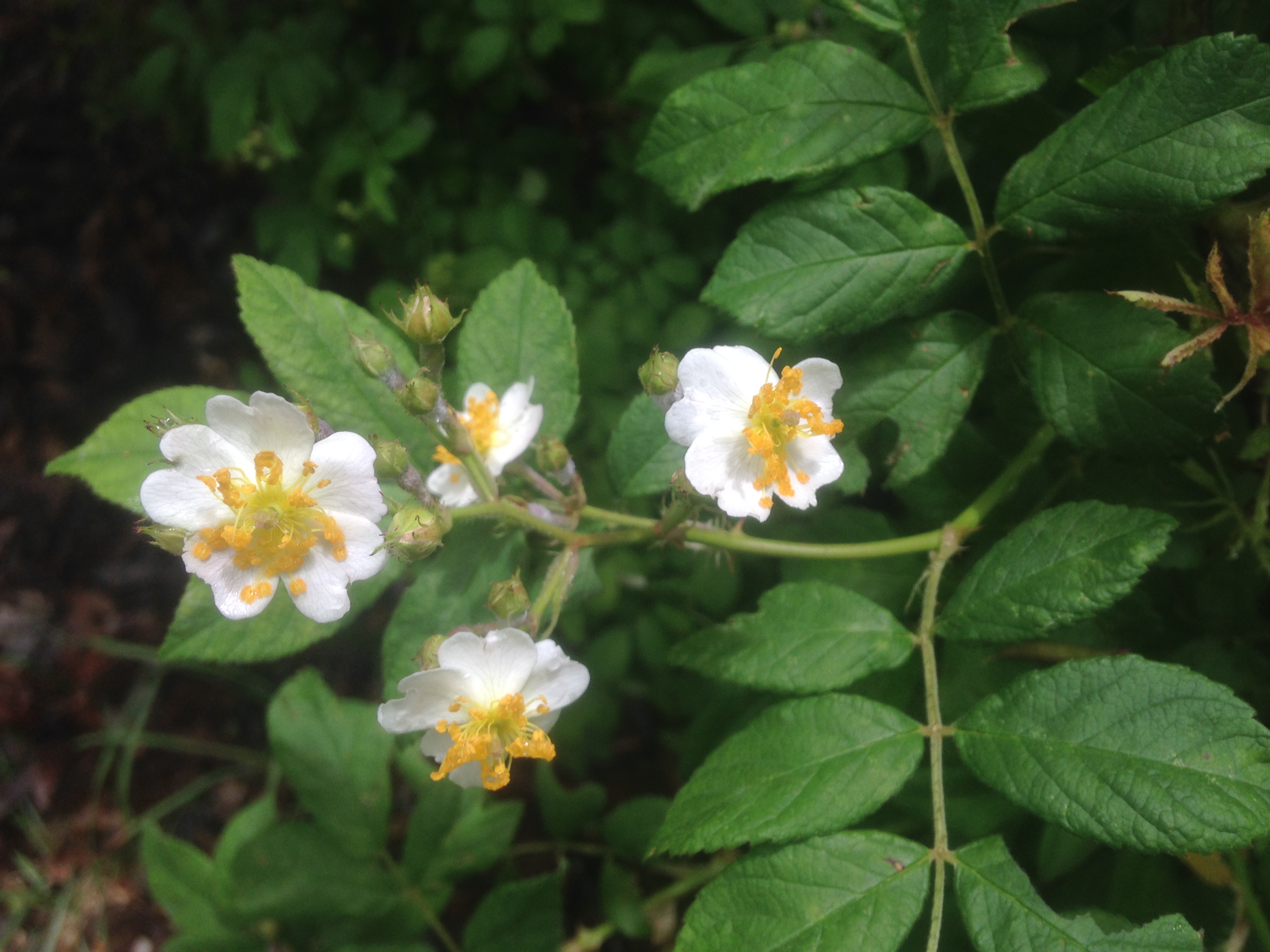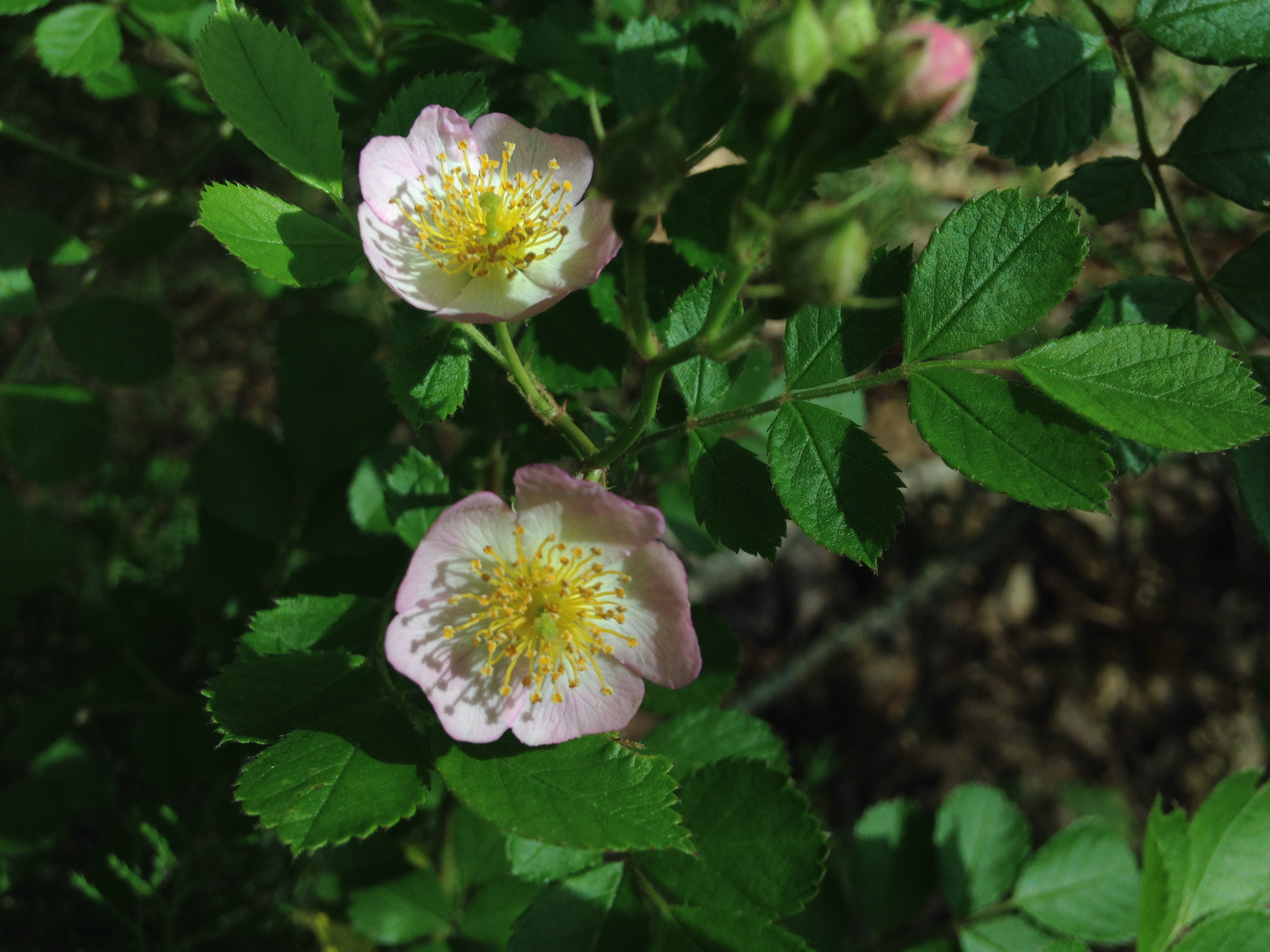 |
| The New Flower (Something Else) When First It Opens |
When the new flower first blossoms, it looks like the picture above. But when the Prairie Rose first blossomed on my property, it looked like the picture below.
 |
| Wild Roses When First They Bloom |
After the Something Else flower has had a chance to spread out its center, it looks like the picture below.
 |
| The appearance of the center of the Something Else flower changes after the first day |
 |
| Wild roses in the woods with the bloom at its brightest |
 |
| The New Flower When it is More Mature |
 |
| The Wild Roses in the Woods When in Full Bloom |
Looking at this turtle in the harsh light of the setting sun, I was sure it was a box turtle, but a little less certain as to whether it is a three-toed box turtle or an ornate box turtle.
So I consulted my turtle expert, Pam Keyes, for an identification. Here is what she had to say:
This may be a cross between three-toed and ornate. It is a female, middle age range, around 20-25, with some shell damage from predators.
The three-toed box turtle (terrapene carolina triunguis) and the ornate box turtles (terrapene ornata ornata) are two different species. But nobody told them that! So they happily interbreed whenever they meet, species boundaries or no species boundaries. This is the sort of boundary crossing that makes the lines that biologists draw a little less than the absolute truth.
 |
| A Common Chimpanzee (pan troglodytes) that I happen to know |
We all know the story we have been told about hybrids. A horse is horse. A donkey is a donkey. A mule is a cross between a horse and a donkey, but it cannot reproduce, so it's a dead end, and that's the story of hybrids. But the real story is a lot messier than that. Species break off from one another for many reasons, not the least of which is simply separation by distance. They start to look different when different individual members of particular lines can reproduce only with each other. But if they happen to meet, though there are visible differences, the different groups still can often interbreed. This is what happened when humans and chimpanzees first broke off from each other. They still continued to interbreed whenever they happened to meet. And it is probably also the case for bonobos (pan paniscus) and chimpanzees (pan troglodytes) if they get the opportunity.
Which brings me to the identification of our problem rose, Something Else. Could it be so closely related to the Prairie Rose that cross pollination can occur? Is it a hybrid? And if so, a hybrid between what and what?







Classificaton of plants and flowers can be tricky. I remember signing up for this botany class that was supposed to be about spring wild flowers, and then the professor joked it was simply a ploy to get students to take a plant classification class. We did learn how to classify many flowers, and I guess I should have kept that the keying book. But the truth is it was very tricky the process we had to go through for keying each plant, so I sold the book.
ReplyDeleteHi, Julia. I envy you the opportunity you had to take that botany class. I was not interested in wildflowers when I was in college, so I never signed up for a class like that. It does sound very interesting. I did not realize that there is so much that hinges on these questions, and I used to think people just looked at flowers and instantly recognized what they were, if someone had told them the name of the flower beforehand.
DeleteTo me it is so interesting what happens when we don't cultivate the land and nature decides what to plant and how to form new species of plants.
Evolution for today. Everything evolves but nobody wants to talk about it. They say that it was all in the past...millenium or more, but it is happening right in your own backyard.
ReplyDeleteDebbie, yes! Evolution never stopped. It is an ongoing process.
Delete